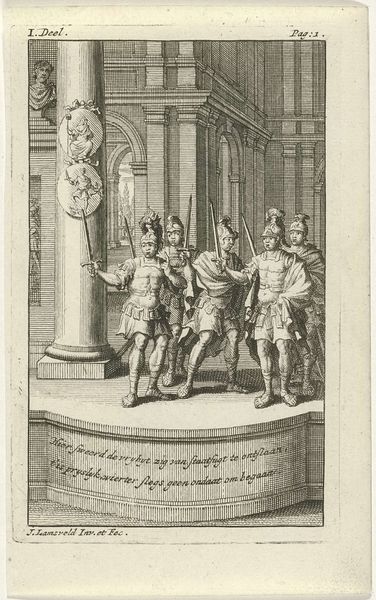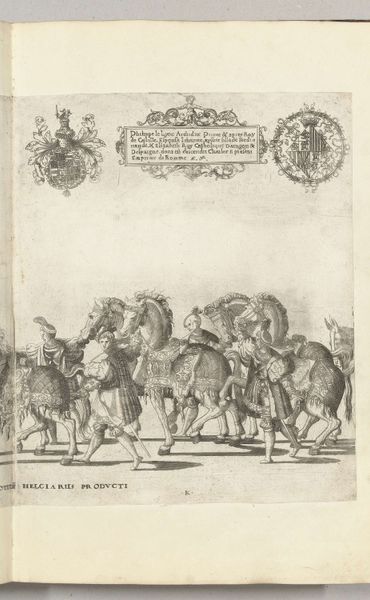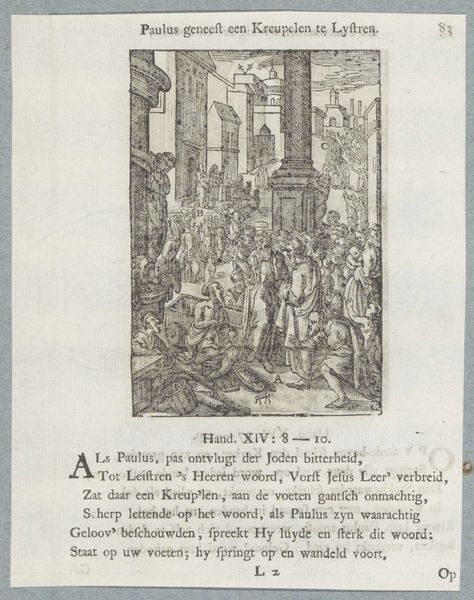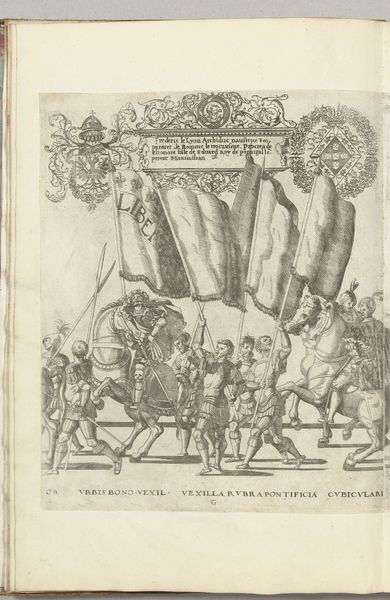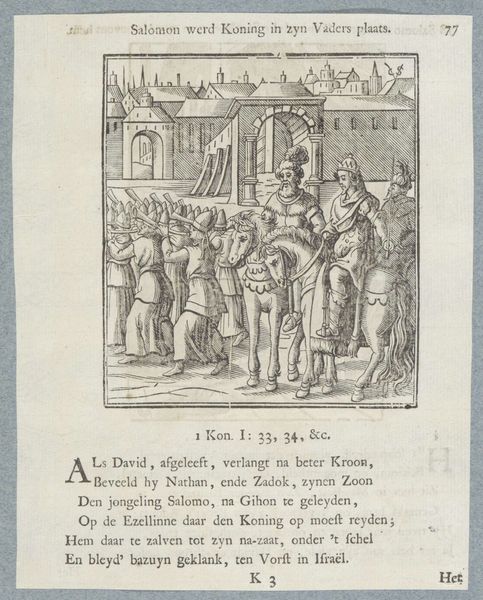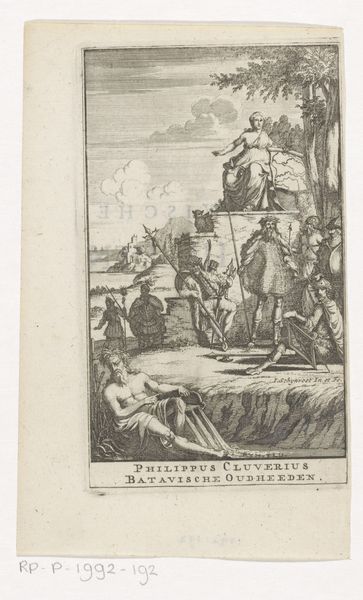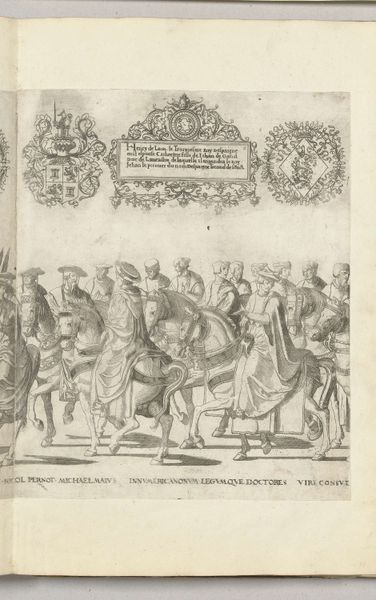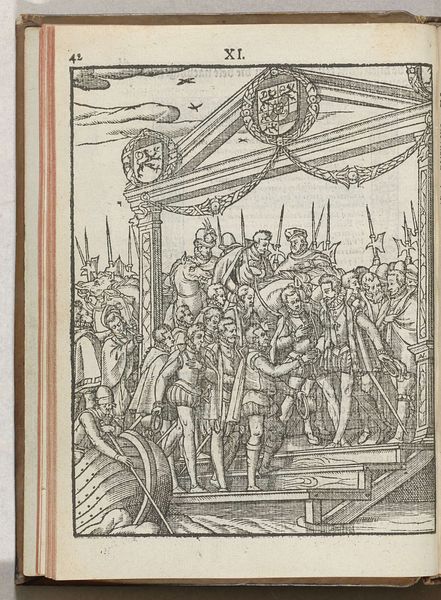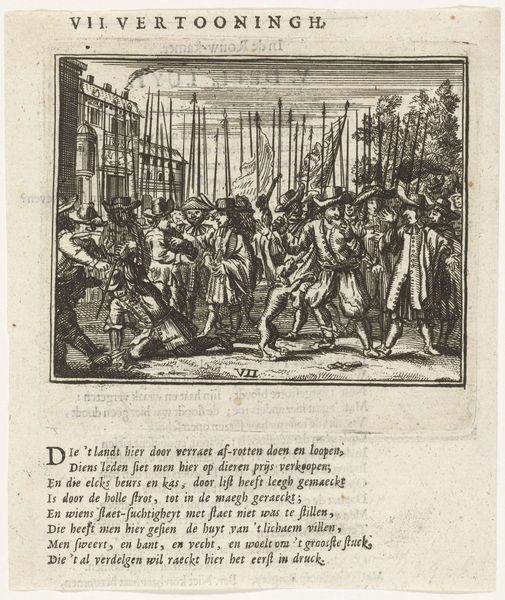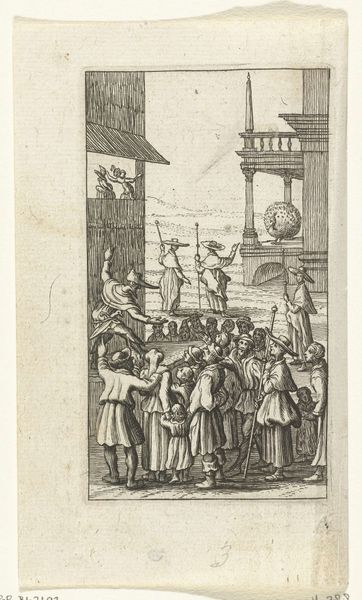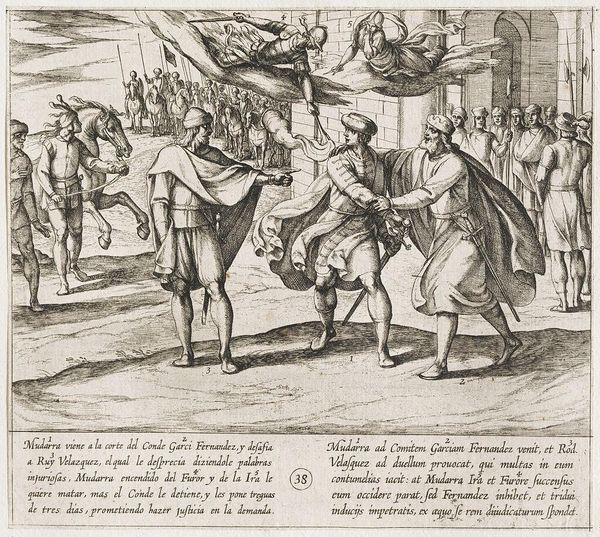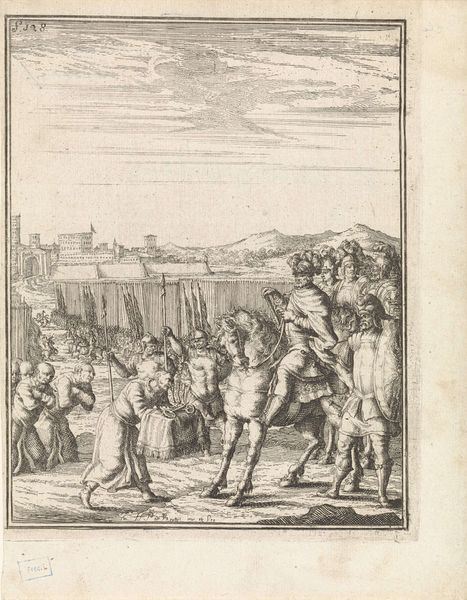
print, engraving
#
baroque
# print
#
figuration
#
line
#
history-painting
#
engraving
Dimensions: height 133 mm, width 82 mm
Copyright: Rijks Museum: Open Domain
This engraving by Jan Lamsvelt depicts the murderers of Julius Caesar fleeing after their deed. Observe the obelisk, a symbol echoing back to ancient Egypt, representing power and memory. In the Roman context, obelisks were appropriated as trophies of conquest, later becoming Christian symbols of steadfast faith. Here, it stands adorned with medallions that capture the deed, turning a moment of political upheaval into a lesson, a memento mori, for those in power. Consider the raised arms and swords of the fleeing assassins, gestures laden with the raw energy of action and the weight of consequence. This motif of raised arms appears across epochs, from ancient battle scenes to Renaissance depictions of martyrdom. It signifies a moment of intense emotional or physical exertion, an appeal to the heavens, or a defiant challenge against fate. This primal gesture touches something deep within us, connecting to our own struggles and acts of defiance. The symbols in this engraving speak not just to the event itself but to the enduring human drama of power, betrayal, and memory. They remind us that history is not a linear progression, but a cycle where symbols and gestures resurface, evolve, and take on new meanings, connecting us to the past in profound ways.
Comments
No comments
Be the first to comment and join the conversation on the ultimate creative platform.
